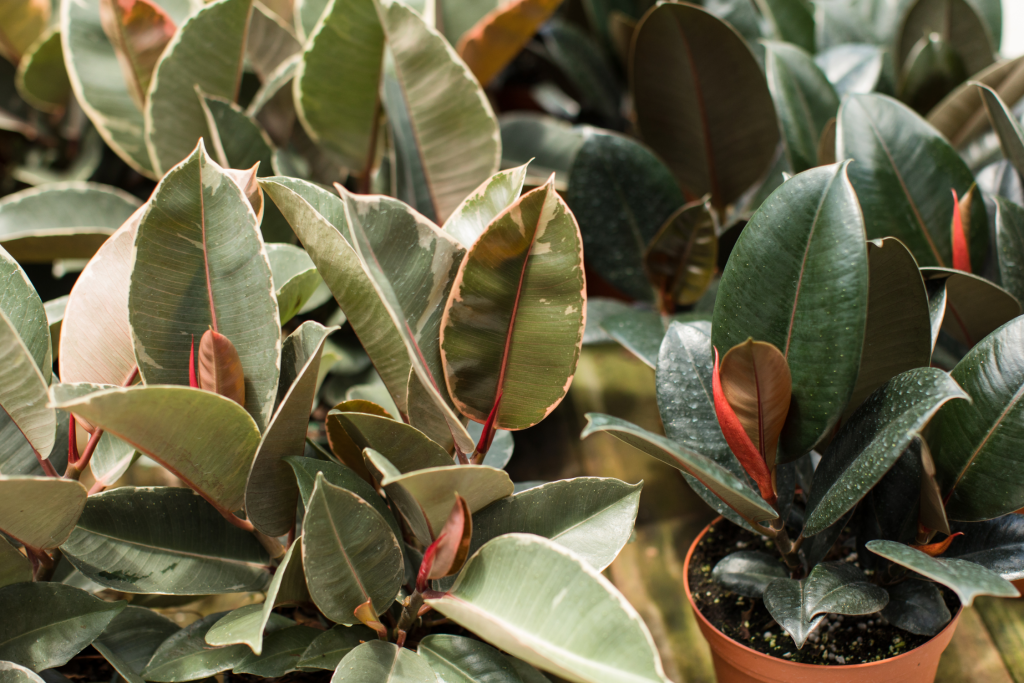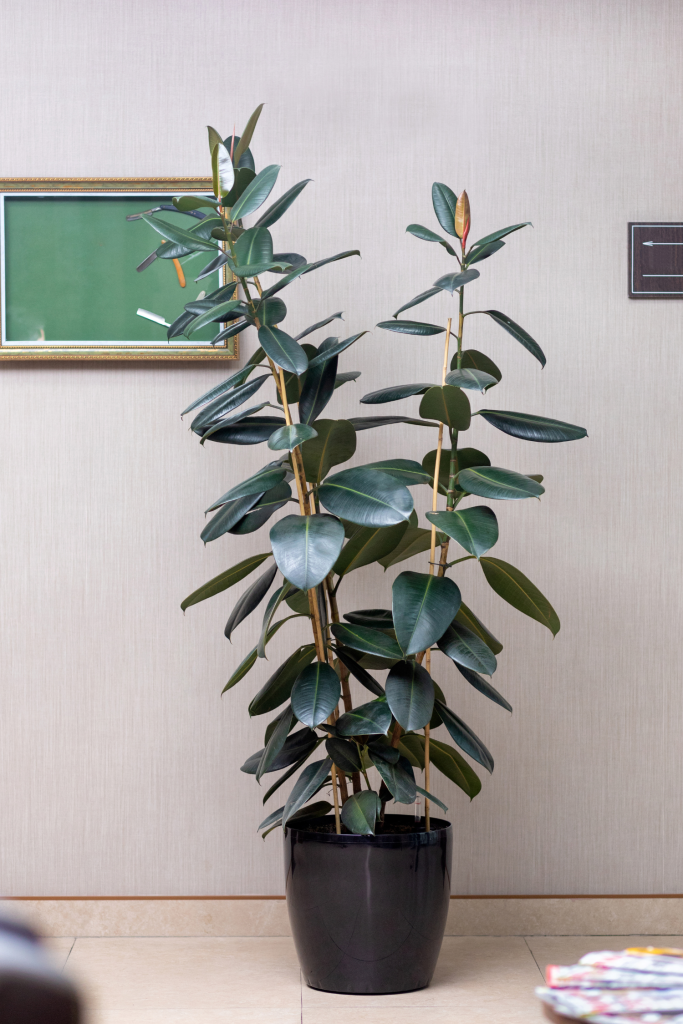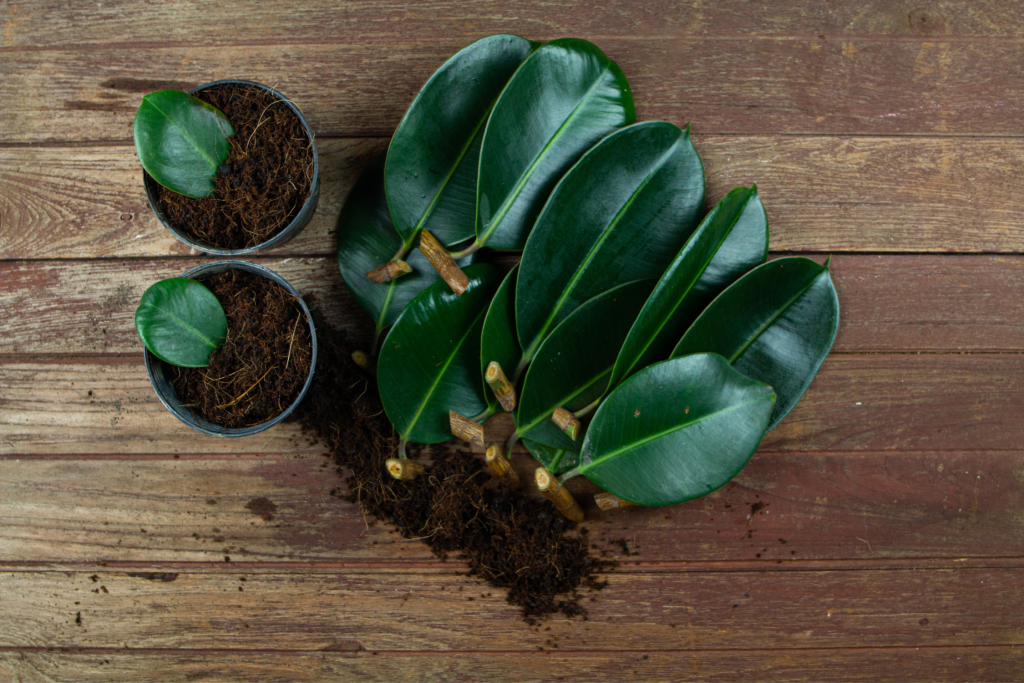The rubber plant (Ficus elastica) is a popular and visually striking houseplant known for its glossy, leathery leaves and low maintenance requirements. Belonging to the fig family (Moraceae), this species is native to Southeast Asia and is cherished for its robust nature and air-purifying qualities. Whether you’re a seasoned plant enthusiast or just beginning your indoor gardening journey, the rubber plant offers both aesthetic appeal and ease of care.
Appearance and Varieties

Rubber plants are characterized by their large, ovate leaves that can grow up to 12 inches long and 6 inches wide. The leaves are typically dark green, although some varieties may have variegations of cream, yellow, or pink. One popular cultivar is the Ficus elastica ‘Burgundy’, which features dark red or burgundy leaves that add a dramatic flair to any indoor space.
Growing Conditions
To thrive, rubber plants require moderate to bright indirect light. They can adapt to lower light conditions but may grow more slowly. Direct sunlight should be avoided, as it can scorch the leaves. Ideal temperatures range from 60-75°F (16-24°C), making them suitable for most indoor environments.
In terms of soil, a well-draining potting mix designed for houseplants is ideal. Rubber plants prefer slightly moist soil during the growing season (spring and summer) but should be allowed to dry out slightly between waterings. During winter, reduce watering frequency as growth slows down.
Care and Maintenance

- Lighting: Place your rubber plant near a window with filtered sunlight or provide artificial light if natural light is insufficient.
- Watering: Water thoroughly when the top inch of soil feels dry. Ensure excess water can drain freely to prevent root rot.
- Humidity: While they can tolerate normal indoor humidity levels, rubber plants appreciate occasional misting to increase humidity, especially during dry winter months.
- Fertilizing: Feed your rubber plant with a balanced liquid fertilizer diluted to half-strength every 2-4 weeks during the growing season to promote healthy growth.
- Pruning: Trim any yellow or dead leaves as needed to maintain the plant’s appearance and health. You can also prune to control its size and shape.
Common Issues
- Yellowing Leaves: Usually a sign of overwatering or underwatering. Adjust watering accordingly.
- Leaf Drop: Sudden changes in temperature or light, drafts, or stress can cause leaf drop. Maintain consistent conditions for best results.
- Pests: Watch for spider mites, scale insects, or mealybugs. Treat infestations promptly with insecticidal soap or neem oil.
Propagation

Rubber plants can be propagated through stem cuttings. Take a cutting with at least one leaf node, allow it to dry and callous for a few hours, then place it in moist soil or water. Keep it warm and humid until roots develop.
Conclusion
The rubber plant (Ficus elastica) is not just a beautiful addition to your indoor garden but also a resilient and adaptable houseplant. With proper care and attention to its basic needs, you can enjoy its glossy foliage and air-purifying benefits for many years. Whether you’re a beginner or an experienced gardener, the rubber plant is sure to add a touch of tropical elegance to your living space.



